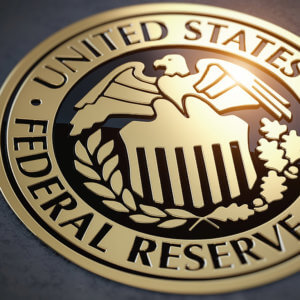Fed Considers Stricter Capital Requirements for Midsize Banks
 Sen. Elizabeth Warren, D-MA, on Tuesday proposed a legislative route to do the same, but Republicans and even some Democrats are waiting on the Fed’s review of recent bank failures.
Sen. Elizabeth Warren, D-MA, on Tuesday proposed a legislative route to do the same, but Republicans and even some Democrats are waiting on the Fed’s review of recent bank failures.
The Federal Reserve is reviewing the capital and liquidity requirements it imposes on banks with between $100 billion and $250 billion in assets, The Wall Street Journal and the Financial Times reported Tuesday, citing a person familiar with the matter.
Such an adjustment would have put Silicon Valley Bank, which counted $209 billion in assets before it failed Friday, and Signature Bank, which had $110 billion, under potentially stricter guidelines.
The Fed in October proposed requiring banks with between $250 billion and $700 billion in assets to carry long-term debt that would be converted into equity to recapitalize the bank in times of extreme stress. That would put the burden of losses on investors rather than taxpayers in a bailout situation.
Additionally, Michael Barr, the Fed’s vice chair for supervision, warned in December that the central bank would complete a “holistic” review of the framework behind stress tests that set capital requirements, but he didn’t give a time frame then.
Last week’s bank failures may well hasten that timeline.
Proposed changes may require more banks to report unrealized gains and losses on some securities as part of their capital, according to The Wall Street Journal. Silicon Valley Bank, for example, concentrated its balance sheet in long-term assets, leaving it more susceptible to failure if customers withdrew their funds immediately.
The rule-change process for the Fed’s October proposal on $250 billion-to-$700 billion-asset banks allows for public comment and takes months. The central bank, however, can choose, under Title 12 of the U.S. Code, to issue an order placing new requirements such as resolution plans, counterparty credit limits or annual stress tests, on banks with more than $100 billion in assets to protect financial stability, American Banker reported.
“That’s something that the Fed could do tomorrow,” Peter Conti-Brown, a professor at the University of Pennsylvania’s Wharton School of Business, told the publication.
Some lawmakers are blaming event bank failures, in part, on a 2018 rollback of parts of the Dodd-Frank Act.
S. 2155, sponsored by Sen. Mike Crapo, R-ID, raised — from $50 billion in assets to $200 billion — the threshold of banks subject to the Fed’s toughest supervisory measures, including stress tests and capital and liquidity requirements.
Sen. Elizabeth Warren, D-MA, on Tuesday proposed a bill to repeal S. 2155.